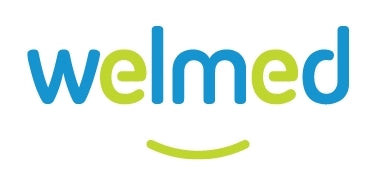Medical supply chains have been pushed to their limits. Skyrocketing demand for
products, material shortages, labor issues, and transportation delays have all
revealed how fragile supply chains are for our industry. Hospitals and other
medical facilities have dealt with product gaps, allocations, and have had to search
desperately for viable alternatives for the products they normally used.
The question is, can medical operations strengthen or enhance their supply chains
to better weather future disruptions like the ones we've experienced in 2020 and
2021? The answer is yes, and the way to accomplish it is through a multi-source
approach.
A Multi-Source Approach To Your Medical Supply Chain
Global supply lines are more dispersed and travel greater distances than at any
point in history. Providing effective healthcare in one part of the world often hinges
on events and developments on the other side of the world. The ability to serve
and help your patients is vulnerable to operational risks and unpredictable
disasters.
The way that healthcare facilities can mitigate the effects of disruptions is to have
multiple options, preferably in different regions. These options can take the form
of either different suppliers, or suppliers that have manufacturing capabilities in
different regions. For example, at Welmed we manufacture and source materials
for Disposable Medical Products across a variety of countries including China,
India, Mexico, Cambodia, Vietnam, the Dominican Republic, Brazil, Saudi Arabia,
Singapore, and here at home.
Having a multi-pronged approach helps ensure we keep our customers' supply
chains moving more efficiently, even if events abroad make it difficult.
Here are the primary ways to develop a multi-source approach for your medical
supply chain:
- Large pool of suppliers—This method relies on having many different
suppliers, so that you aren't as vulnerable to disruptions related to a
single medical supplier. - Small pool of vendors with flexible operations—This option involves
having a few suppliers for your products that have the manufacturing and
distribution flexibility that we mentioned above. - Having a backup vendor—This approach entails identifying and vetting an
acceptable supplier to use in case of disruptions or surges in demand.
Vetting a back up vendor will help you avoid counterfeit supplies in times
of need.
Which Type Of Medical Supply Chain Is Best For Your Operation?
There are advantages and disadvantages for each of these multi-source
approaches to your hospital supply chain. It's true that having a large pool of
medical suppliers can shield you from possible disruptions, however dealing with
many different vendors can create more work and make quality more difficult to
control.
Having a backup vendor that steps in if another supplier of yours is having
problems can sometimes be an effective way to mitigate unforeseen product gaps.
However, the problem is that when you do need them, they may not fully
understand your needs, you may not be their top priority since they are just a
backup supplier, and they might have an inferior product. Although not the
preferable way to enhance your supply chain, if you do go this route, make sure
the vendors have already been vetted to avoid counterfeit supplies during surges
in demand.
The safest bet to protect your medical supply chain and healthcare facility from
allocations, backorders, and other disruptions is to have a small pool of trusted,
flexible suppliers. More than just a single supplier, but not so many that managing
them becomes difficult.
Working with a few companies that you know and trust will hedge your operation
against problems with one of them. Plus, if they have manufacturing and supply
capabilities based in different regions, then you can help protect yourself from
supply issues in a specific part of the world.
How To Choose Reliable Medical Suppliers
Enhancing your hospital supply chain means finding multiple, trustworthy, reliable
partners. Above all else, you have to look at their track record for quality and
delivering products when they say they will. When choosing medical suppliers, you
should ask yourself the following questions:
- Do they have manufacturing capabilities or partners in different regions?
Are they proactive about finding alternate products to offer potential
solutions. - Will I have direct access to their team, including leadership, if I need it?
- What do their customers say about them?
- Does your supplier strategically capture your supply needs for direct
integration into production plans? - Do they have their own team of quality inspectors or factory employed inspectors?
Enhancing your medical supply chain means finding reliable suppliers with high
quality products. The key to withstanding the most difficult disruptions is to have
multiple resilient and flexible partners that go out of their way to ensure the
medical products you need.

